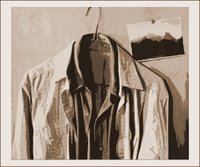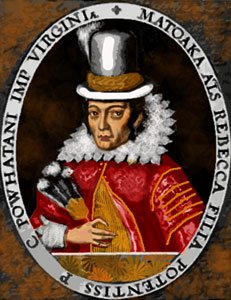
I have seen Brokeback Mountain three times and wept each time. I have read the short story and the screenplay and wept at each. I guess that makes me a weeper.
Having seen the movie when it first came out, I wanted to write about it but found myself inarticulate in describing why the film is so powerful to me. A friend asked, isn’t that inability to speak about what is important one of the points of the film?
For me the story speaks about our American Puritan ethic of denial. Rather than allowing himself to deal with “this thing that takes ahold of us,” Ennis denies it, refuses to name it, hides it away from view, eventually mounting it as a shrine to what he has lost. For a love story, it’s amazing that love is never mentioned.
Annie Proulx in Brokeback Mountain: Story to Screenplay says that the story is really about destructive rural homophobia. [130] Published first in The New Yorker in October 1997, the “gay cowboys” story includes the possible hate-murder of Jack, which in turn eeirily foreshadowed the brutal October 1998 murder of Wyoming student Matthew Shepherd, something Proulx talks about in her essay “Getting Movied.”
From 1997 to 2004, Larry McMurtry and Diana Ossana wrote the screenplay, fleshing out the characters of the wives and children, and spent almost seven years trying to get it into production.
It’s interesting to watch the “Brokeback” phenomena grow and take on a life of its own. According to LOGO, “Brokeback” has become synonymous to “gay” (as in “that’s so Brokeback”). One site, youtube.com, has a series of videos either parodying the film—as in Brokeback to the Future—or ones using footage from the film. One of the most touching is one using footage but substituting Garth Brooks’ “Shameless.” It offers an interesting perspective of both.
 | Last week the two shirts that were major symbols in the film were sold at auction for $101,100.51. The buyer referred to them as “the ruby slippers of our time.” The shirts are perhaps one of the most potent symbols of the story/film and a friend who has seen the movie twice surprised me by not remembering them. |
In the story, Annie Proulx allows Ennis to find the shirts, realizing first that it is Jack’s old shirt with Ennis’ blood on it, and then in the next paragraph that his own plaid shirt that he thought he’d lost is carefully worked down inside Jack’s sleeves.
…Stolen by Jack and hidden here inside Jack’s own shirt, the pair like two skins, one inside the other two in one. He pressed his face into the fabric and breathed in slowly through his mouth and nose, hoping for the faintest smoke and mountain sage and salty sweet stink of Jack but there was no real scent, only the memory of it, the imagined power of Brokeback Moutain on which nothing was left but what he held in his hands. [26]
Later, beside a postcard he gets of Brokeback Mountain, he drives a nail in a corner of his trailer and on it hangs the wire hanger and the two old shirts suspended from it. [27]
What I find fascinating is seeing how the symbol was reworked by the screenwriters:
And there, on the back of the closet door, WE SEE THE SHIRTS, on a wire hangar suspended from a nail, and next to them, a postcard of Brokeback Mountain, tacked onto the door. He has taken his shirt from inside of JACK’S, and has carefully tucked JACK’S shirt down inside his own.
He snaps the top button of one of the shirts. [97]
When Jack takes the shirt, he hides Ennis inside his shirt, just as he hides him inside himself… and in the film, we see that Ennis has finally understood and done the same. He says, “Jack, I swear,” but as Annie Proulx writes in the short story, “ though Jack had never asked him to swear anything and was himself not the swearing kind.”
Whether the film will win the Academy Award next Sunday as Best Picture, it has already won that title from the New York Film Critics Circle, British Academy Film Awards, and Directors Guild of American Awards. It has already etched itself into my life and my experience. For me, it was the best picture I saw last year.
Bright Lights Film Journal offers two contrasting articles on Brokeback Mountain:
- Men in Love on Brokeback Mountain by Matthew Kennedy
- Toto, I Don't Think We're in the Grand Tetons Anymore by Alan Vanneman
John Scagliotti offers an interesting perspective from a gay man's viewpoint in Why There Are No Real Gay Men in "Brokeback Mountain."

